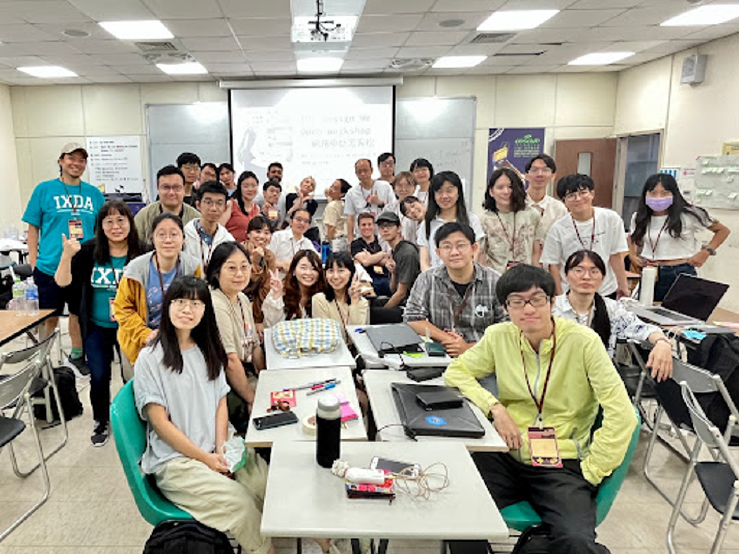
At COSCUP 2023, we held a workshop “The Design We Open - Network Disruption Hackathon” (The Design We Open Workshop - 網路中斷黑客松), a workshop focused on how we, as designers and configurers of technology for human rights needs can better understand Taiwanese citizens’ understanding and experiences of internet shutdowns, and what is important in a partial or full internet shutdown.
All of the openly available resources created at our workshop in Miro (an online white-board tool) are available to view; a backup version was downloaded in September 2023. You can explore the HackMD notes from the workshop and read the details of the session on the 2023 COSCUP schedule.
Planning and preparing a OSS and design workshop for internet shutdowns
COSCUP is a large, international, open source conference that has been running for as long as, or almost as long as FOSDEM. It predominantly serves and is rooted in the Taiwanese and broader east Asian open source community.
This year Superbloom put forward a proposal that combines design, OSS and human rights in a workshop at COSCUP which was hosted at the National Taiwan University of Science and Technology (NTUST) in Taipei.
The COSCUP event is divided into a number of different areas or tracks, run by a community that chooses different track focuses. We hosted our workshop in the Open Design track and it was the second year an Open Design track was held at COSCUP.
We called the workshop “The Design We Open - Network Disruption Hackathon” (The Design We Open Workshop - 網路中斷黑客松). Our workshop focused on how we, as designers and configurers of technology for human rights needs can better understand Taiwanese citizens’ understanding and experiences of internet shutdowns, and what is important in a partial or full internet shutdown. The extended aim of the workshop was to bring together designers, OSS contributors, human rights advocates and concerned citizens to explore and communicate the opportunities and innovations that could be built to support continued, uncensored access to the open internet.
At Superbloom, we know that internet shutdowns have been increasing around the world, affecting more and more people. Building on our takeaways from a convening on internet shutdowns in 2022 we have been exploring ways to better understand the global impact of internet shutdowns, how they affect people, and the open source tools that people and human rights activists need to access in order to develop resilience around and combat in response to a shutdown. For the COSCUP workshop, our goal was to attract not just technologists who build open source software for internet shutdown scenarios, but also other stakeholders who can contribute, e.g. designers, community organizers, and other kinds of practitioners who haven’t been as involved previously. We created a space where this diverse group of practitioners could share their experiences, co-create, and contribute input for how these tools and scenarios can be better designed.
There is a wealth of knowledge within the open source and human rights technology design community which can be leveraged to make human rights tools more user centered, usable and accessible by everyone. At Superbloom, we believe that creating bridges between stakeholder groups within shared cultural contexts provides insights that can lead to critical improvements as well as contribute to improvements that are globally relevant.
We are dedicated to ensuring that the work needed to connect these different communities is well-facilitated and supported. One of our main aims in the workshop was to make sure that designers from a community that may not have as much experience with open source software or with human rights technology were able to offer their design expertise alongside their experience of residing in Taiwan/east Asia. This facilitation and community gathering work often goes unnoticed and unsupported. Critical human rights topics can be better tackled as a coordinated effort by bringing together different communities.
When designing workshops for open source conferences we don’t know who will attend which sometimes makes it difficult to plan. Furthermore, we wanted the COSCUP workshop to be friendly and accessible to beginners. As such, we had many conversations with the organizers of the Open Design track and the volunteers helping us, to better understand their aims and how the workshop sits within the event.
Despite having a sign-up process, we didn’t plan to “gate keep” participants. If attendees didn’t have a certain level of skill, we would not exclude them. We wanted to make sure this was open and available for all kinds of people; people with a lot of design expertise, people with not a lot of design knowledge, people versed in open source, and people with not a lot of open source knowledge.
One of the ways we were successful in bringing many more designers into the space was in partnering with IxDA Taiwan. IxDA Taiwan brought an understanding of the design processes that made sense within Taiwan and supported attendees’ understanding of designing for tools which they may not have a lot of experience with. While incredibly knowledgeable in design practices, designers and IxDA team members are not as knowledgeable in the design practices that work for human rights tools and internet shutdown scenarios.
This is where Superbloom brought its unique expertise to the workshop. We design and build technology for human rights uses, for human rights activists and for internet shutdown scenarios on a daily basis. We are immersed in this knowledge and practice.
While a lot of designers’ knowledge and expertise is transferable into the human rights technology space, there needs to be more effort and support given to people who can be the facilitators and custodians of the bridges between skills and domains, and who can advise where those skills can be applied.
Many of the design workshop activities were not necessarily new or ground breaking in technique, but as mentioned above, bringing together designers within the internet shutdown scenario space in an open source environment was the most groundbreaking part of the workshop.
Introductions and icebreaker
We began by introducing Superbloom and ourselves as facilitators, and the IxDA Taiwan team did the same. We started with an icebreaker activity to make sure that people didn’t necessarily gravitate towards the group in which they felt most comfortable.
Human rights tools demo
After groups were formed, we demoed key human rights technologies and open source software tools, explaining how and why they are used. We focussed on tools that can be used offline, and also tools that have limited capabilities when there is a patchy internet connection.
To gain insight, we brainstormed tools the participants knew about that could be used in internet shutdown scenarios. Participants suggested technology tools and also “low tech tools” such as ham radio or pen and paper to deliver messages to different people. Other suggested tools were: BB calls, drones, block chain, physical letters, radio messages, Starlink, satellite phones, Bridgefy, Lalamove and Telegram.
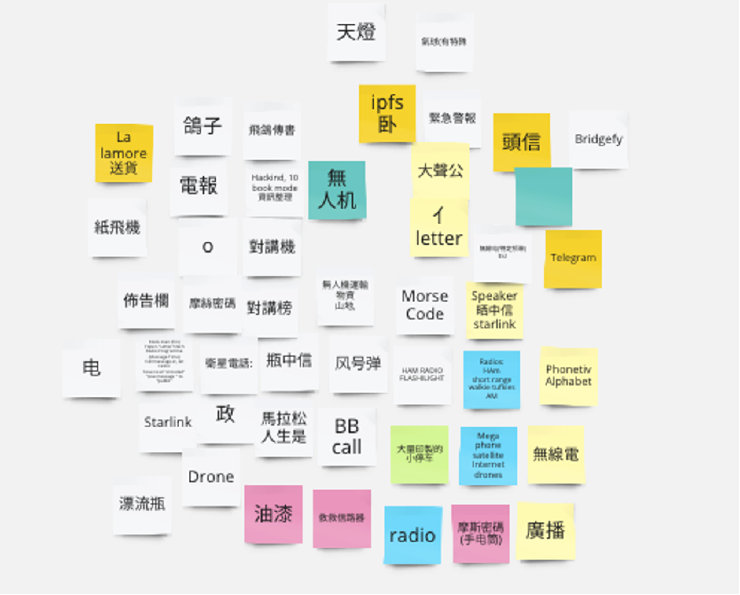
Personas discussion
We then moved into a segment around a series of personas we had prepared. These personas were intended to “spark ideas” and were there to be remixed and edited by workshop participants. This was the first activity the attendees worked on together in their groups. We asked them to read the personas as well as the various internet shutdown scenarios we had prepared and to choose which ones they wanted to focus on.
With the tool knowledge from the demos, sample personas and scenarios workshop segments, we asked participants to adapt and amend the personas and scenarios we presented, or to come up with completely new scenarios.
Some of the scenarios given were:
- A user persona is covering a student-led protest about surveillance technology for her journalism job.
- A user persona is trying to access information about relocation in case content might be blocked via an internet shutdown.
- A user persona is being harassed and bullied online and needs to document what has happened and what is happening in order to send out the information to contacts before social media is blocked and her VPN stops working.
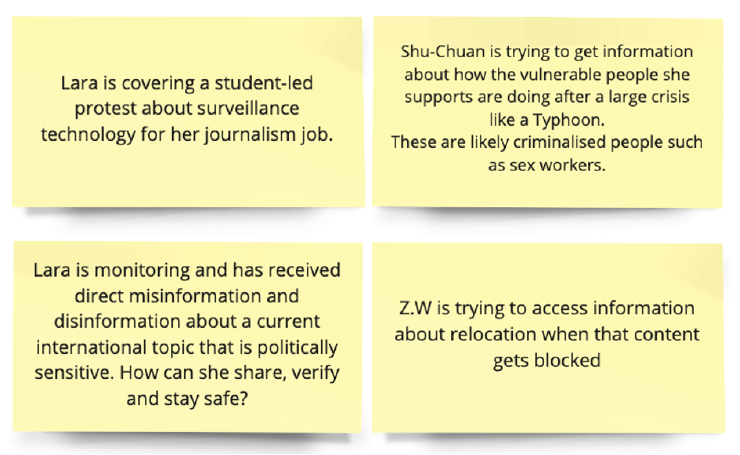
Our personas followed a few different conventions, and participants were able to bring unique Taiwanese and East Asian perspectives.
These are the personas we put forward:
- A journalist and activist who identifies as a woman. She is a well-informed activist who stays up-to-date on current events and the latest news, and she has been targeted by the government and other entities. She uses a lot of chat applications to talk with contacts, and she writes a lot of articles that are not only critical of the government, but also talk about sensitive topics that governments and other entities would prefer citizens don’t talk about openly.
- An older computer science literate blogger and activist who has previously been surveilled and visited by Government authorities, detained and received many phishing articles after posting articles critical of government authorities around technology.
- A women’s and LGBTQ+ rights activist who works with students and other local women, advising them and funding them, as well as finding funding opportunities for them. In this role she supports a lot of different community members, and her needs were mostly around moving from a more typical role within society to a sensitive, high risk role via the nature of the work she’s doing in the personas.
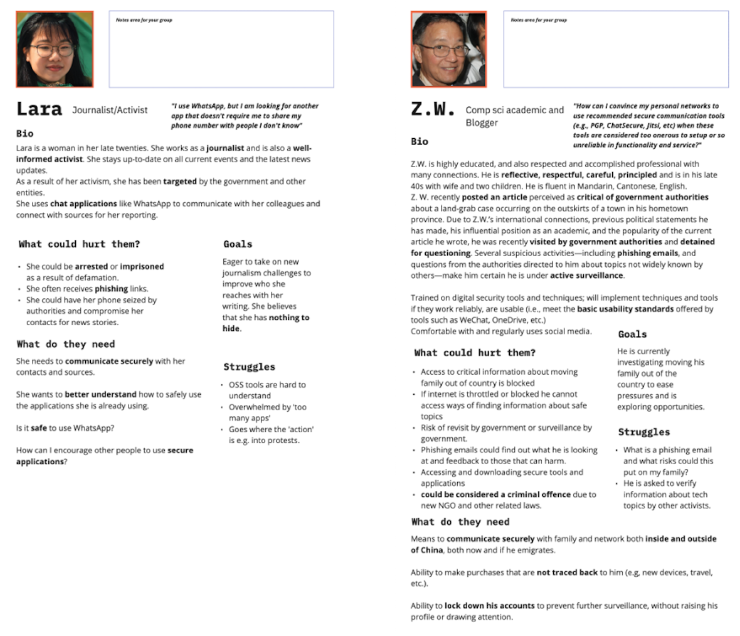
Sections detailed who they were and what they needed, what could hurt them, and their goals and struggles. The difference between what they need, what could hurt them and their struggles are often fuzzy. Trying to better understand what the person is going through is critical in order to better design tools for them.
We also provided past user feedback from different human rights and internet shutdown related tools. We talked about the existing UI standards for human rights technology and current different circumvention tools. These are often not user-informed and have complex UIs and complex functions.
The first half of the workshop mostly included understanding information, information gathering, and coming together as teams to better understand the problems. Before we simulated an internet shutdown, we asked workshop attendees to report to the group on their personas and their scenario. During the simulation, we asked participants to switch off the internet on their phone and various devices. This was to help those who have never experienced a situation without internet connectivity to better understand what it’s like, and how they might perform typical communications and technology tasks when they cannot rely on the internet.
User journey mapping exercises
For the remainder of the workshop we took the persona, scenarios and understanding of OSS technologies, and used these to do user journey mapping exercises. We did this because we find these exercises to be profound within the internet shutdowns and circumvention tool scenarios, because it is where we find critical intervention points in tool usage.
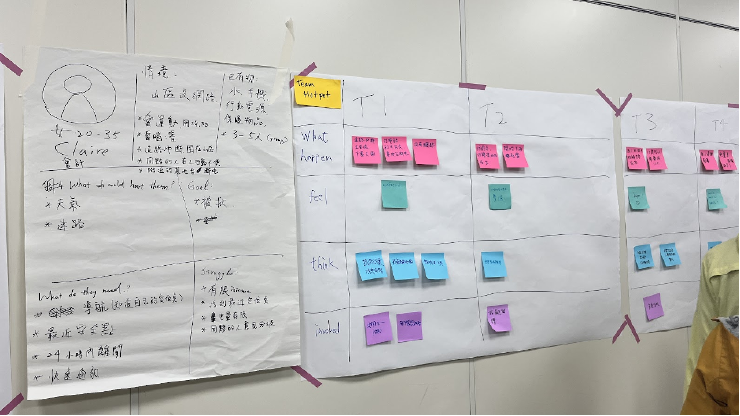
The user journey mapping exercise mostly included conversations about the different kinds of actions and choices that can be made during a large protest, or when being tracked and monitored by malicious entities, as a lot of people don’t have experience in what it’s like to experience these scenarios.
During the workshop, we encouraged participants to think about the different possibilities, and to pick the route their chosen persona would most likely and logically take when faced with a user choice. There are not necessarily any incorrect routes. All routes of a user journey map are worth mapping, so that we can discover as many uses of tools as possible.
Participants at workshops such as these will always greatly benefit from people with first hand experience of the high-risk human rights cases the personas were mapping. Lack of first-hand experience is a consistent challenge in delivering design and technology workshops of this kind. This is typically because we must ensure the safety of people who have experienced human rights abuses and internet shutdowns while still inviting them to workshops in order for them to offer their experiences and expertise. This can be a big ask of their time and resources.
Sensitive to these dynamics, we step in and offer our own knowledge as a substitute for some of these first-hand experiences. This way, participants can ask us questions about the work we’ve done around these high-risk user situations and the choices they may make. We also encouraged the workshop participants to do research in whichever way they are able in order to map and model the different routes that could be open to the users for the user journey.
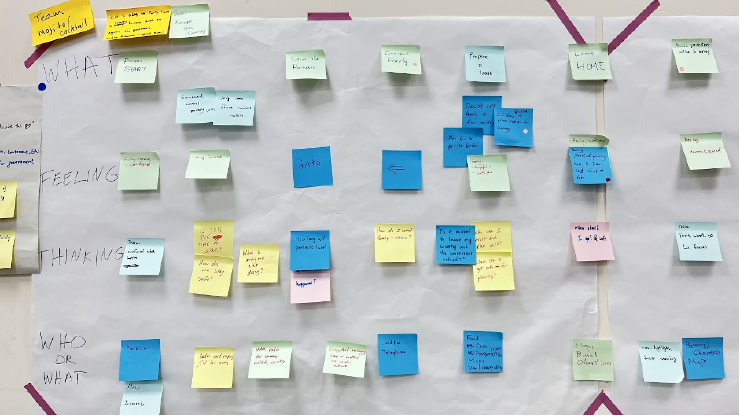
When teams were satisfied with their user journey maps, we invited them to find a critical point of intervention in order to explore what they could do to improve a tool or the experience of a user within the scenario.
Finding critical moments in user journey
In the workshop we used an example of a critical point of intervention we found within a protest internet shutdown scenario. We discovered a go-to behavior when the internet is shut off and the user still has access to a messaging application. This is where, despite the internet being “off”, users will still scroll their applications and message history while waiting to see if the messages go through. Here we found an important point of intervention. As users are unable to send critical files of information, they can scroll their chat history and “rediscover” files and information which may be useful.
Here, the intervention was the act of sending essential information when the internet is “on” in case they need this information when the internet is “off”. This is what we learned through user journey mapping.
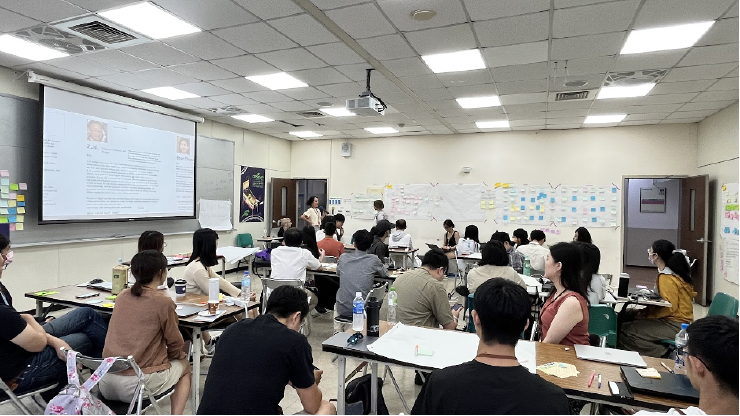
Ideation and design
Workshop participants found a number of critical points of intervention throughout the workshop and mapped a series of different interventions, from localized mesh networks to using taxi drivers to understand the layout of a city and deliver messages. Participants designed a variety of solutions that included software, hardware tools, utilizing existing tools and creating new technology.
User experience interventions were developed such as pinning information at the top of messaging tools, and messaging applications automatically pinning when “offline” on that device.
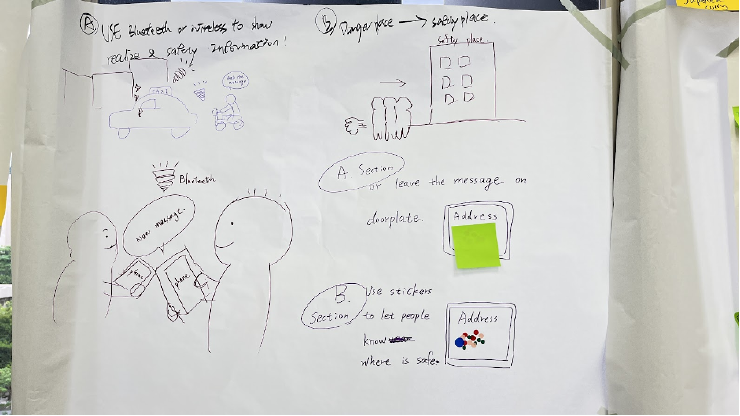
Looking ahead
In future internet shutdowns focused workshops, we would like to directly apply our learnings to the technology at hand. However, it would be much more useful if people who have experienced these scenarios and/or the tools creation teams are present. In order to close this gap, we will invite technology tool teams to workshops where direct tool interventions can be made live in an open source way. This is how we can develop and build on the success of this workshop.
To sum up, we really enjoyed attending COSCUP 2023 and meeting all of the participants. We appreciate their dedication and full participation in the workshop.
Credits
Project contributors: Superbloom, IxDA Taiwan, COSCUP, National Taiwan University of Science and Technology.
With support from the Open Technology Fund.